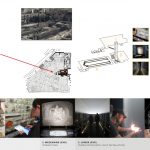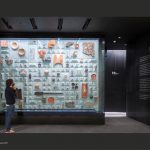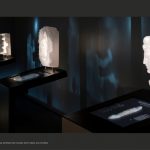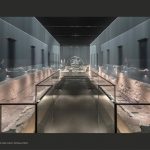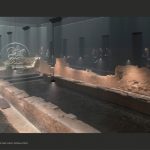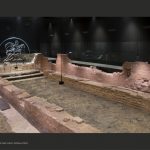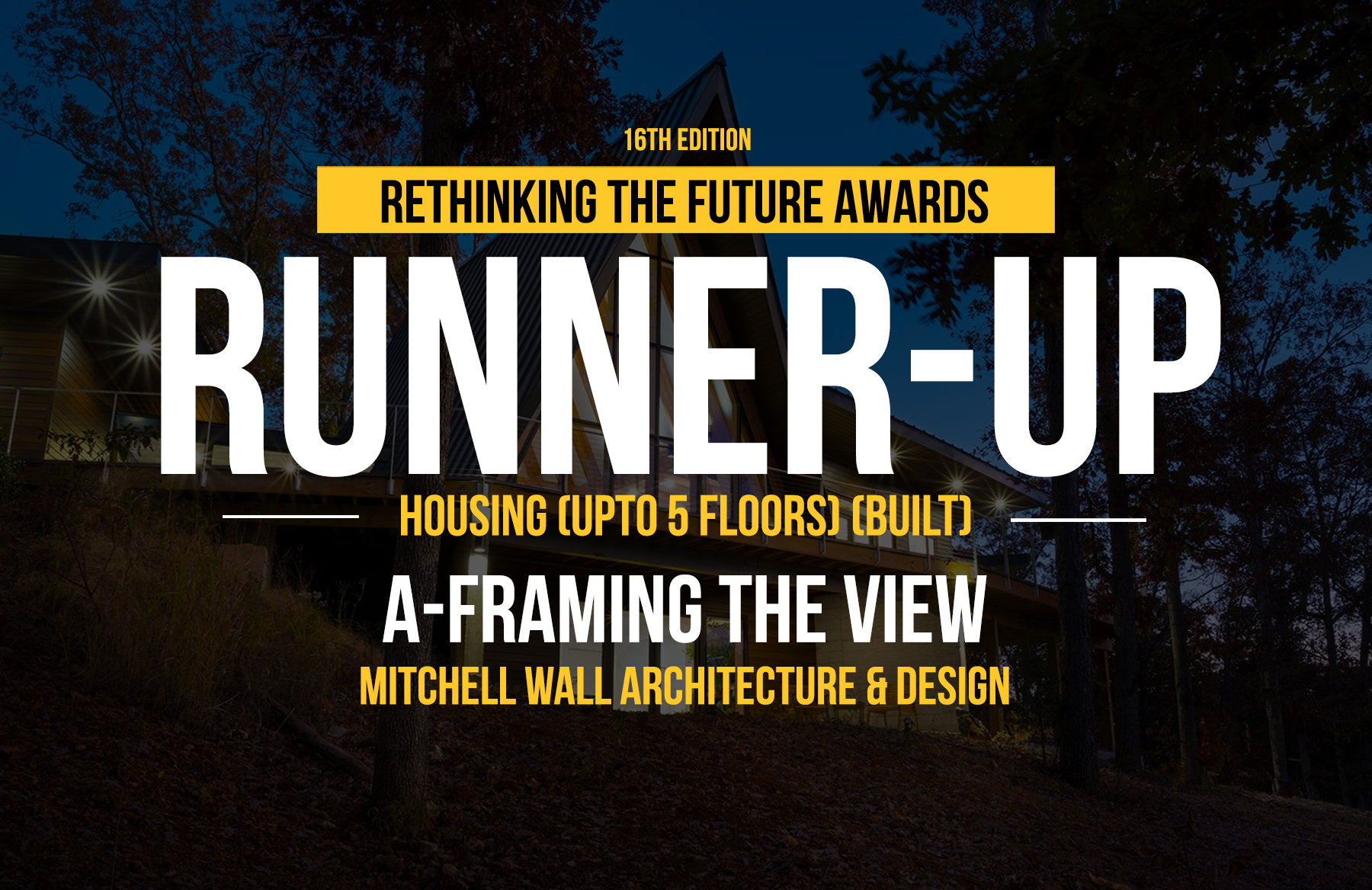Mixing archaeology, artifact installation, and contemporary art commissions, London Mithraeum invites visitors to encounter a spectacular showcase of history that recounts the mystery of the ancient cult of Mithras that once worshipped in the ancient city of Londinium.
Architecture, Construction & Design Awards 2018
Third Award | Cultural (Built)
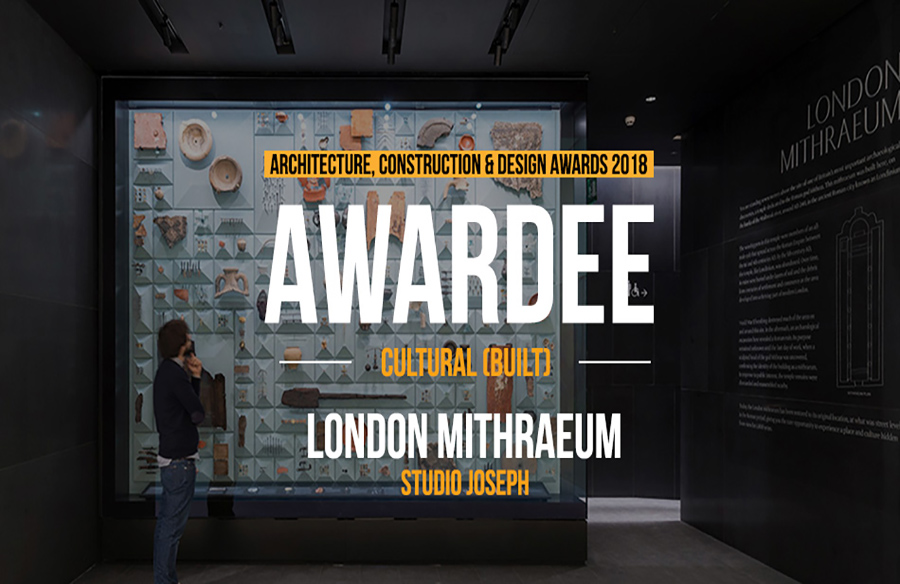
| Project Details | |
| Architect: | Studio Joseph |
| Team Members: | Wendy Evans Joseph |
| Exhibition Architecture and Design: | Studio Joseph |
| Media Design: | Local Projects Jake Barton |
| Lighting and Haze Design: | Matthew Schreiber |
| Architectural Lighting: | Tillotson Design Associates Suzan Tillotson |
| Archaeology: | Museum of London Archeology Sophie Jackson |
| Architect of Record: | Foster + Partners Owe Schoof |
| photographer: | James Newton |
| Country: | United States |
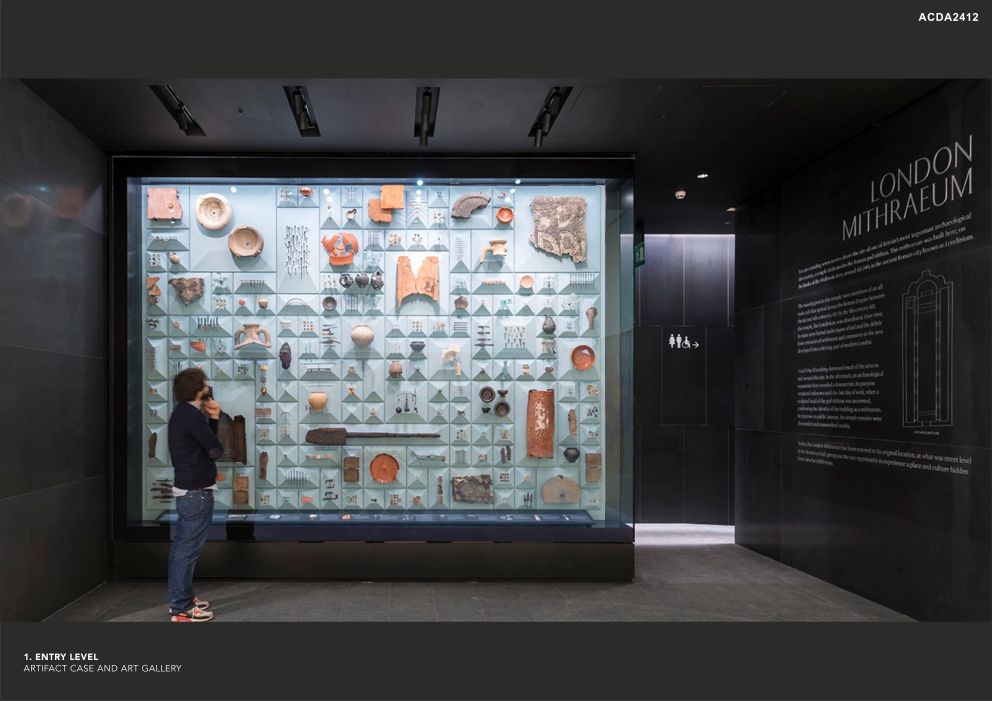
©James Newton
Buried below London’s city streets for two millennia, a Roman Temple of Mithras was discovered in the 1950s as London removed the rubble after the World War II Blitz. Bloomberg chose to reinstall the temple ruin in the lower levels of their headquarters as part of a three-story archeological museum that includes some of the other 17,000 artifacts discovered during the excavations for their new building. Now, one of London’s most prized archeological findings returns to the site of its original discovery in a complimentary cultural space that reimagines the ways we engage with ancient Roman empire artifacts.
The entry floor contains a gallery of contemporary art with a vitrine displaying over 600 Roman artifacts that serves as the museum portal. In a reference to classical architectural façade motifs, a topography of pyramidal forms showcases mounted artifacts. The collection comprises significant archaeological discoveries including the first ever written reference to London and the earliest dated document— a wood writing tablet—ever found in Britain. Visitors then descend a cascading staircase flanked with etched granite walls depicting stratigraphy— the rock layers of history ranging from Ancient Roman streets to modern day elevation.
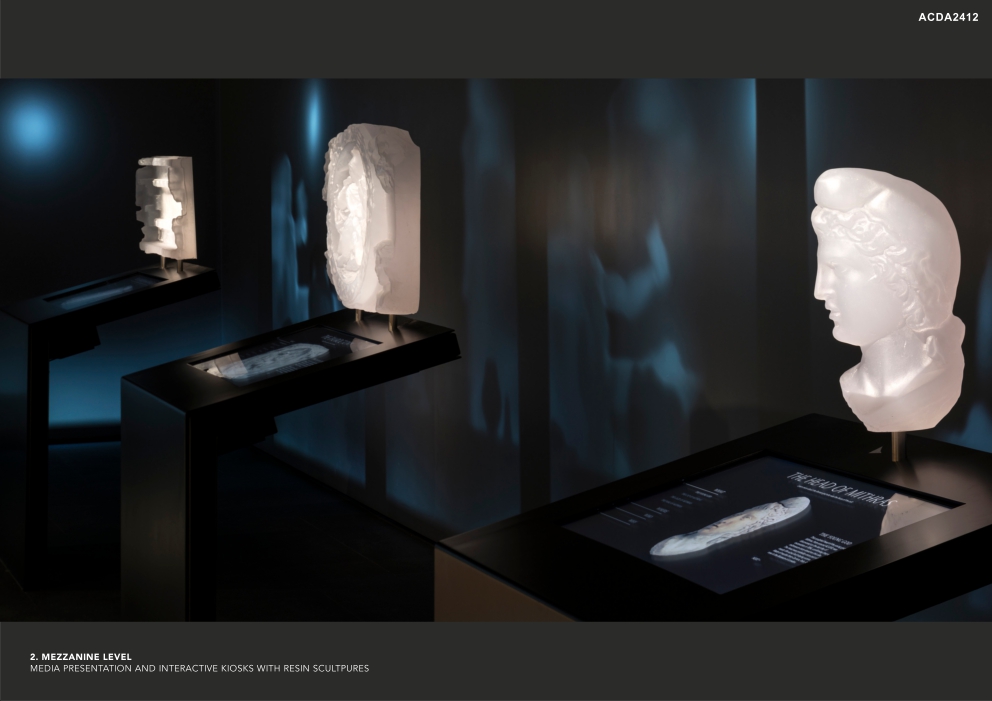
©James Newton
The next exhibition level contains the majority of the scholarly information which is paired with 3D facsimiles of temple artifacts: the head of the god Mithras, the altar relief, and the temple model. These recreations are cast via 3D scans of actual artifacts and rendered in translucent resin. They pair with interactive stations that sit against a backdrop of dramatic animations and evocative audio narration recounting the story of the Mithras cult. For example, as contemporary scholars describe ancient scenes, projected figures magically emerge from the shadows into the light. Together, these elements offer a deeper anthropological context for the artifacts.
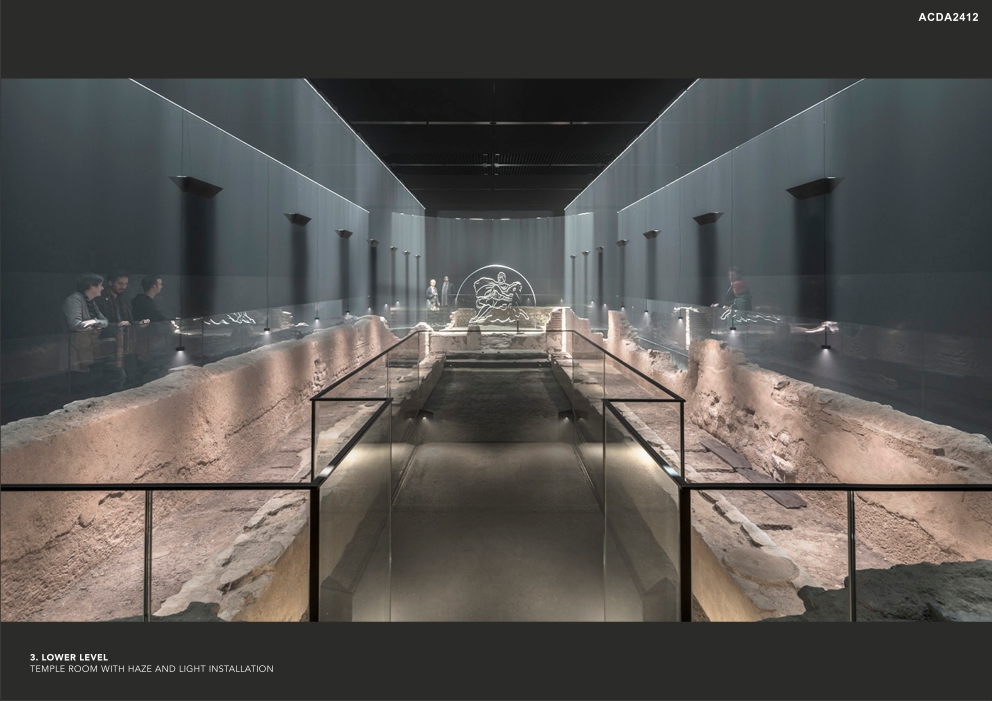
©James Newton
Within the lowest level, visitors encounter a darkened room of the temple ruins. Walls of light rise over the temple’s foundation remnants recreating the three-dimensional forms of the original temple. A “haze” of glycol and water solution—never-before used in a permanent installation—renders light beams visible. To create the vertical surfaces of light, the low voltage fixtures project horizontally above the ceiling plane to a series of mirrors and refining apertures to increase the density of the beam. The temple altar consists of five layers of water-jet-cut steel in the shape of the Mithras slaying a bull—each layer cantilevered so that every silhouette is illuminated. The sounds of water, chanting, music, and fire create a mysterious encounter with the past, mirroring the enigmatic nature of the Mithras cult.
- ©James Newton
- ©James Newton
- ©James Newton
